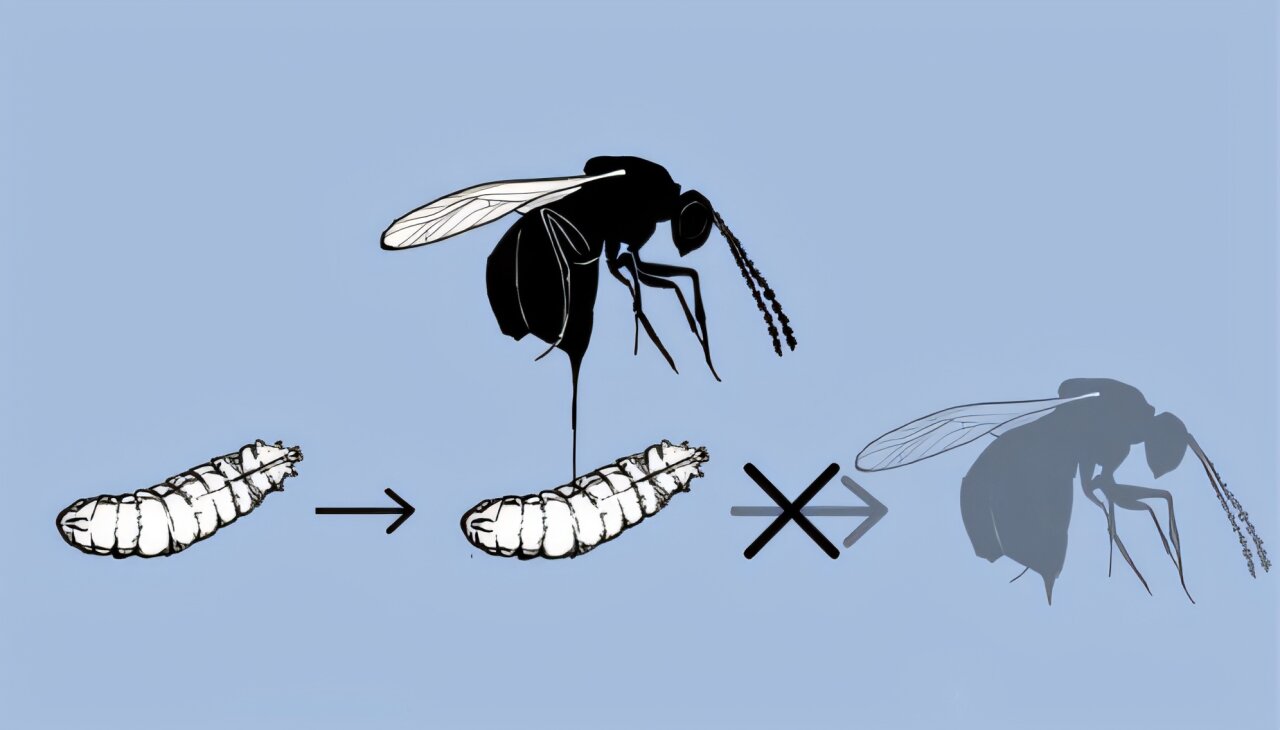Fruit Flies Borrow Bacterial Genes to Outwit Parasitic Wasps
In a remarkable display of genetic ingenuity, several species of fruit flies have acquired a bacterial gene to defend against parasitic wasps. This groundbreaking discovery highlights horizontal gene transfer (HGT) as a vital mechanism for rapid adaptation, even in multicellular organisms like insects.
A Borrowed Defense Against a Gruesome Fate
Parasitic wasps lay their eggs inside fly larvae, leading to a devastating cycle where the wasp offspring consume the host. Researchers from the University of California, Berkeley, found that fruit flies, such as Drosophila ananassae, have adopted a bacterial toxin gene, enabling them to fend off this parasitic invasion. This “stolen” gene, encoding a DNA-cutting toxin, effectively turns the fly’s immune system into a powerful defense mechanism.
In earlier research, disabling this gene using CRISPR genome editing rendered the flies almost entirely vulnerable to parasitic wasps. In the latest study, published in Current Biology, scientists inserted the gene into another species, Drosophila melanogaster, which subsequently gained resistance to wasp predation.
Horizontal Gene Transfer: A Rapid Evolutionary Shortcut
Horizontal gene transfer, the movement of genetic material between unrelated species, is common in microbes but was thought to be rare in animals. This study challenges that notion, suggesting that HGT might play a significant role in animal evolution.
“This shows that horizontal gene transfer is an underappreciated way that rapid evolution happens in animals,” said Rebecca Tarnopol, the study’s lead author.
How the Defense Works
The toxin gene, named fusionB, originates from a bacterial virus and encodes a nuclease that destroys DNA. In flies, this nuclease floods the body, targeting and neutralizing wasp eggs. Researchers in Hungary confirmed the toxin’s action using antibodies to track its movement within the fly’s body.
While the gene’s improper expression can be lethal to the host, evolutionary fine-tuning has allowed flies to express it selectively, enhancing survival without self-damage.
Broader Implications for Immunity and Evolution
The discovery of this gene transfer and its role in immunity sheds light on how animals innovate to survive predation. It may also inspire new approaches to combating human diseases, such as infections or cancer, by studying similar immune adaptations.
“When you’re a small organism facing rapidly evolving pathogens and predators, borrowing genes from bacteria and viruses can be an ingenious strategy,” said senior author Noah Whiteman.
Expanding Our Understanding of Evolution
This research underscores the dynamic interplay between predators and prey and highlights the untapped potential of humoral immune factors in invertebrates. By revealing how fruit flies co-opt bacterial genes, the study expands our understanding of the evolutionary arms race and opens new doors for exploring genetic innovation in other species.
Funded by the National Institutes of Health, the study was a collaborative effort between UC Berkeley, Hungary’s Institute of Genetics, and Stanford University, showcasing the power of interdisciplinary research in uncovering the mysteries of life.
